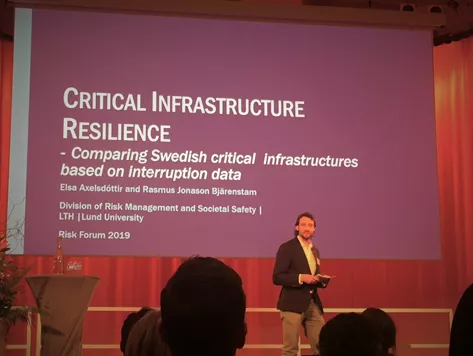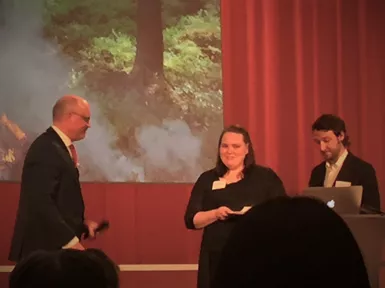Examensarbetet "Critical Infrastructure Resilience – Comparing Swedish critical infrastructures based on interruption data" av Elsa Axelsdottir och Rasmus Jonason Bjärenstam, handledda av Jonas Johansson, belönades den 28/3 med förstapris vid SWERMA:s Risk Forum i deras uppsatstävling. Gratulationer till Elsa och Rasmus för väl genomfört arbete.
Examensarbetet kan laddas ner här.
Abstract
Today’s modern societies are becoming increasingly dependent on the vital societal functions that technical critical infrastructures provide, for example availability of electricity, tap water and internet connectivity. Hence, it is of essence that these infrastructures are resilient to interruptions.The purpose of this thesis is to investigate and contrast resilience levels of different types of technical critical infrastructures in Sweden. A generic resilience assessment approach is developed that utilises interruption data, as given by data on duration and consequence of failures that are gathered by infrastructure owners. This interruption data is used as a measure to indicate the level of ‘functionality’ of each infrastructure over a given duration. When the functionality is analysed over time, a so called ‘resilience curve’ can be derived. These resilience curves for different infrastructures are then used as basis to contrast and compare resilience levels achieved by the different infrastructures.The resilience assessment approach has successfully been applied to interruption data, enabling objective quantifications in a unified manner, for eight different Swedish critical infrastructures. The results reveal that the Swedish electricity transmission system is most resilient. Least resilient, with a great margin, is railway transport system. Second least resilient infrastructure is the electricity distribution system. The rest of the infrastructures, water supply system, road transport system and telecommunication systems with regard to mobile communication, broadband services and fixed telephony, lies between these three, but all relatively on similar levels.Examples are given for the possible fields of usage with respect to the suggested approach and the presented results. It is concluded that the results produced by the approach could be useful in risk management processes and related work within spatial planning or societal safety. The possibility to measure resilience as a function of time in a unified manner across different types of infrastructures, enables comparisons between the infrastructures. Such information could be used as a basis for decision makers to e.g. evaluate policy and mitigation decisions.



